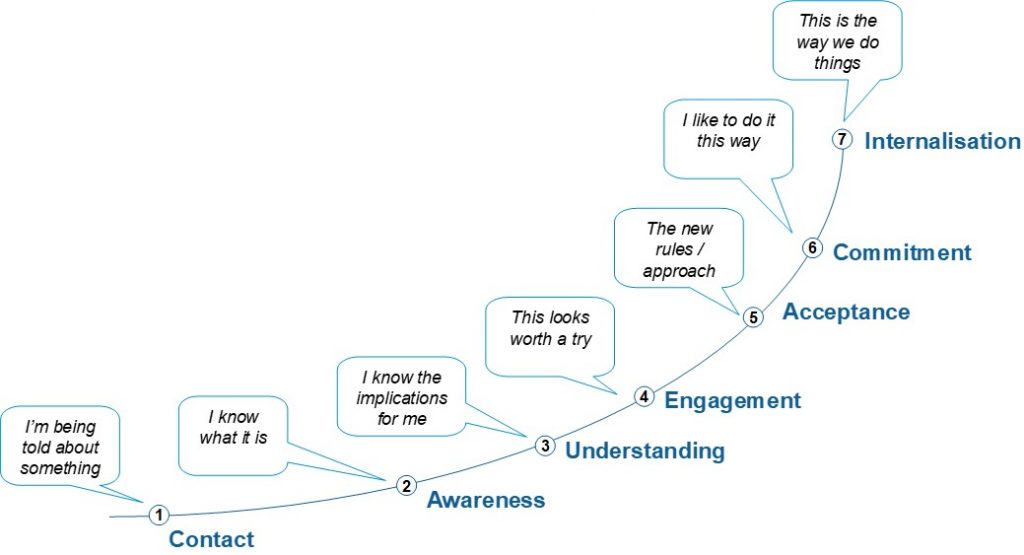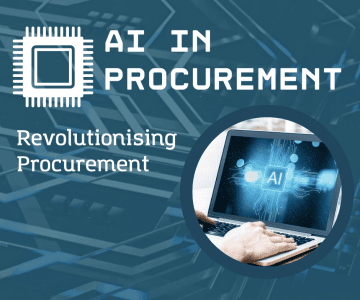The Change Journey

A unique set of challenges
Change: an inherent characteristic
The public sector exists in an atmosphere dominated by change. Regular changes to policy, rapid development of information and knowledge management capabilities and increasing expectations of the public enforce the notion that change is an inherent characteristic of public sector organisations.
Responding to change has resulted in numerous solutions being implemented, including outsourcing, in-sourcing, consolidation and more recently, intergovernmental cooperation.
These constant transformations taking place within public sector organisations has meant that never before has a coordinated and planned approach to change management been more essential.
The tools provided in this publication are a starting point for public sector managers hoping to gain control over the challenges associated with a constantly changing environment.
Seven stages of change
Major change is disruptive for people as it changes the way they work, their perceptions of what is expected of them and perhaps the skills they have acquired over the years. Once these ‘norms’ are challenged or overturned, people have a tendency to lose control.
During the seven stages of change (illustrated in the Commitment Curve, below), it is important to surface people’s fears and help them to see the opportunities for the future way of working.
Focusing on sustainable implementation through the seven stages of change, as opposed to a ‘reactive quick-fix’ approach to change management, will help build the required level of support from stakeholders along the way. This ensures the changes become supported and internalised.

Where to begin
Identifying your current state will pay dividends in the development of a change management strategy. Make sure you can adequately complete the following before proceedings any further:
•articulate the scope of the changes
•explain the driving forces behind the project
•outline what will change, and what will not
•get an initial idea of the impact on people, staff, skills, culture.
A key requirement of making change happen is for people to be dissatisfied with the current means of operating and to understand the costs of not changing.
In order to achieve a successful go-live of any process, system or skills related change project, it is critical to assess the impact on existing people and teams at the start. Once an appreciation of what needs to be done differently in the future has been gained the change activities can be designed to help change perceptions, retrain skills, refocus the culture.
Once people ‘understand’ more about the change and personal impacts on them, the organization will move more easily in to the acceptance threshold of commitment – and people will be willing to give things a try.

Future vision
Providing a vision of what the future is going to be like is important. Making that vision compelling and meaningful to everyone is very difficult.
A vision needs to clarify the direction in which the company is heading, needs to be motivational for people to follow, and gives focus on a shared outcome that everyone can contribute to.
This step is important as it answers the question for people – “why should I strive to create this particular change?”
An important note to remember is that the vision needs to be flexible and have something in it for everyone.
Develop communication principles
In order to break the status quo and start on a change process, people have to believe that staying the same is not an option. This step is about creating the readiness to change amongst employees at all levels of the organisation.
Articulate the solution so that it is clear what has to be implemented in order to reach the future vision.
Assess project specific risks
Each project will have its own scope and impact on people, technology, processes and culture. It is important to assess the major risks of impact, roles, readiness and resources.
Assess organisation capability and risks
Capability is the ability to do something. It is vital to assess the level of change related capability in the organisation versus that which will be required for the project to be successful.
Understand existing capability of staff and how you may take steps to increase that capability. It is important also to understand how other major projects have been implemented in the past.
Build Commitment
The aim of the change management plan will be to build commitment to the project and the future world that has been designed. This commitment will need to come from all levels of the organisation.
It is important to understand who will be impacted (stakeholders), in what way, and then to understand how to engage with those areas.
At the same time as dealing with ways in which people will need to change or be re-skilled, it is important to understand how each group may resist the changes and how to overcome this resistance.
Essential tools for change members
Stakeholder management is about understanding who is involved/impacted by the change or what you want them to do differently, and then pro-actively planning their engagement so they support you at the point in time when you need it.

This work:
•minimises potential risks of blockers or resistance
•clarifies who is involved or impacted by the changes
•proactively manages the key stakeholders, to successfully achieve required support & commitment you require.
The cost of building commitment is high. However the cost of not having it is higher still.
It is important to recognise the true cost of the change at an early stage.
Organisations will either pay early or pay later, but they will pay for not having the right support and commitment.

Change Manager Q&A
The map below provides a comprehensive list of questions Change Managers should seek answers to in order to plan for proper stakeholder engagement and communication.
| Change drivers benefits / dis-benefits
|
Where we need them to be
|
Concerns
|
Actions
|
Change is challenging
Change is part and parcel of achieving improvement, but its implementation can be challenging and resource-intensive.
Grosvenor provides an experienced, outside-in view to help you understand the impacts of change, successfully make the transition and overcome any challenges involved.
Our end-to-end service, including stakeholder engagement and communication, facilitates buy-in and provides a watertight planning and implementation process.






